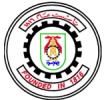The Beginning of Engineering Education in Egypt
The beginning of modern engineering education in Egypt dates back to 1816 when the famous Wali; Mohammed Ali Pasha established “Madrasat El-Mohandeskhana” (which means in Turkish Language the School of Engineering). The school was headed by Hassan Afendy known as “El-Darwish El-Mousely” and located in El-Kalaa (the Citadel) district. It remained there until 1834 when it was moved to Bulaq, a district of Cairo.
In September 1854, the school was closed; but four years later in December 1858, a school for irrigation works at the Barrage and a school for building in the Citadel (Cairo) were established. The two schools were , however, closed in 1861. In 1866, a school of Irrigation and Architecture was re-established by the Khedive Ismail (son of Mohammed Ali Pasha), temporarily in Zaffran Palace, Abbassia (Cairo) and then in the Palace of Moustafa Fadel Pasha located at Darb El-Gamamiz (Cairo) in 1867.
Emerging Specializations
In 1866, two separate departments for Irrigation and Architecture were established. The study was extended to five years with the first as a preparatory year, and specialization took place in the final two years of study. In 1896, the two Departments of Irrigation and Architecture were grouped again in one single department.
The Royal School of Engineering
In October 1902, the school was moved to a temporary location in the premises of the School of Agriculture at Giza. By 1905, the new buildings of the “Royal School of Engineering” bordering Giza Zoo and facing Orman Park, were completed. The school was then moved to this location and remained there ever sense. In October 1908, study was once more divided into two departments for Irrigation and Architecture with specialization in the final two years. But in 1916, the school started to offer specialized studies in the final two years in five departments: Irrigation, Architecture, Municipal, Mechanical and Electrical Engineering.
Major Developments and Expansions
In 1925 and 1926, the school was widely reorganized and some expansions took place in laboratories, lecture theaters and in the scope of studies offered to students. Four departments already existed namely; Civil, Architecture, Mechanical and Industrial. Civil Engineering included six branches: irrigation, municipal, bridges, harbor, surveying and railways. Whereas, Mechanical Engineering included two departments: Mechanical and Electrical. The laboratories for hydraulics and testing of materials were established in 1927, and the physics laboratory was expanded in the same year.
In 1928, Mr. Charles Andrea was appointed as Headmaster of the Royal School of Engineering. He was an earlier professor and dean at the School of Engineering of Zurich, Switzerland. Soon afterwards, the syllabi of the school were developed, improved and upgraded to match those taught at the technical high schools in Europe. Accordingly, it was decided in 1929 to increase the course of study from four years to five years adding a preparatory year once more. In 1931, a modern heat engines laboratory was opened and a new workshop equipped with the latest machinery was established to offer the students the necessary practical training. One year later the foundation stone of the new electricity laboratory was laid down.
The Faculty of Engineering
In 1935, the “Royal School of Engineering” was renamed as the “Faculty of Engineering” after being annexed to the “Egyptian University.” The Faculty of Engineering has kept this name ever since. The year 1942 marked the start of higher post-graduate studies in the Faculty of Engineering. In the forties, the Faculty started to enhance and strengthen its teaching activities in order to cope with concurrent national engineering progress.
More Departments
The evolution of the newly established departments is given hereinafter in chronological order:
| 1942 | Chemical Engineering | |
| 1944 | Petroleum and Mining Engineering. | |
| 1953 | Aeronautics Engineering | |
| 1959 | Metallurgical Engineering | |
| 1960 | Production Engineering and Design. | |
| 1976 | Biomedical Engineering and Systems | |
| 1993 |
Computer Engineering |
|
Expansion in Buildings
The Faculty of Engineering has also been expanding its buildings and facilities in order to cope with the increased need for teaching obligations.
| 1965 |
|
|
| 1970 |
|
|
| 1974 |
|
|
| 1992 |
|
|
| 1995 |
|
|
| 1996 |
|
Current Status
The Faculty of Engineering comprises at present the following fourteen scientific departments:
- Engineering Mathematics and Physics
- Architectural Engineering
- Structural Engineering
- Public Works
- Irrigation and Hydraulics
- Mechanical Power Engineering
- Mechanical Design and Production
- Aeronautical & Aerospace Engineering
- Electrical Power and Machines
- Electronics & Communications Engineering
- Chemical Engineering
- Mining, Petroleum and Metallurgy
- Biomedical Engineering and Systems
- Computer Engineering
The number of faculty members approaches 1000 and the number of under-graduate students is about 14000 M.Sc. and Ph.D. degrees awarded during 1995/1996 reached nearly 240.
Conclusion
Since 1816 until today, the Faculty of Engineering has witnessed over 35 Deans. They all strove to develop the educational as well as the research activities of the faculty by initiating new departments, enhancing the infrastructure and developing strong links with industry and society.
Currently, the faculty, as all other faculties of Cairo University, is managed by the Dean and three Vice-Deans for Academic & Students Affairs, Postgraduate & Research Affairs, and Environment & Society Affairs.
